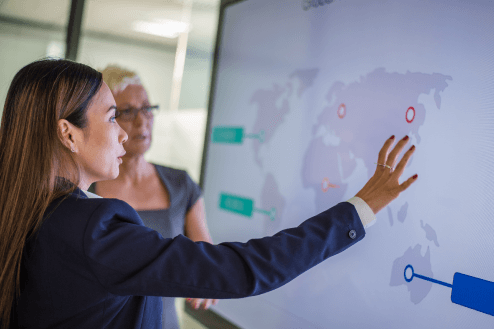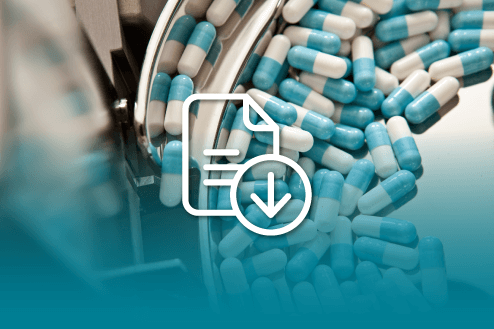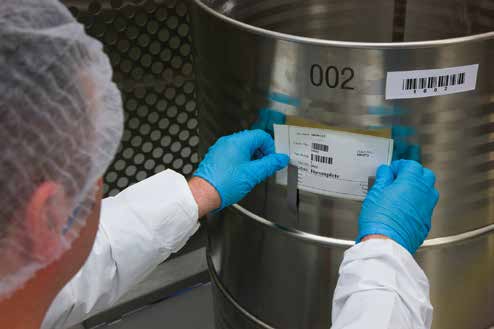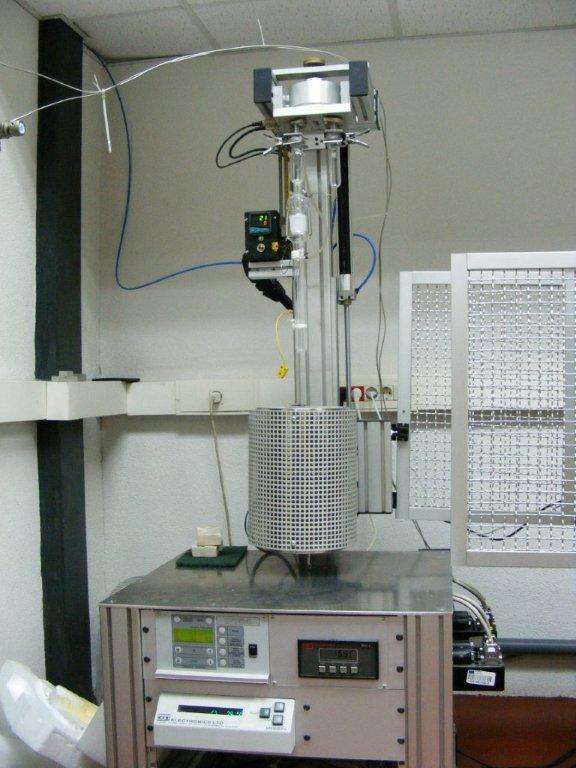 Back to news
Back to news
High Temperature Studies at Physical Metallurgy Department, CENIM, Madrid
Physical Metallurgy is one of the three departments in which the National Center for Metallurgical Research (CENIM) in Madrid, Spain, is divided. CENIM is part of the Spanish Council for Scientific Research (CSIC) in the Area of Science and Technology of Materials. Research in CENIM involves many topics including: corrosion and protection of alloys, biomaterials, development of techniques and processes for metal recycling and the development of new materials such as stainless steels, intermetallics and light alloys. Dr Pablo Pérez Zubiaur, a tenured researcher in the Physical Metallurgy department, has been working in high temperature studies since 2001. There are two microbalances kits from CI Precision in their laboratory and these are the main components of their thermobalance set-ups. Each kit consists of the MK2-M5 weigh head, DISBAL control unit, LabWeigh software, high temperature glassware and accessories. Dr Pablo Pérez states:“We use the thermobalances to get accurate mass gain measurements over the course of experiments at high temperatures – up to 900-1000ºC depending on the material and atmosphere – running for up to 150 hours (about one week). The shape of the sample is governed by the type of raw materials: usually circular, rectangular or square samples of about 1-2 mm thick. Synthetic air is normally used in high temperature tests, although we also use nitrogen gas when carrying out nitriding tests. The data are recorded via a program using Labview software.”According to his opinion, high accuracy in thermogravimetric measurements is required to give appropriate interpretation to experimental results. For instance, the influence of moisture present in the atmosphere on the oxidation resistance of titanium at 700°C is small and makes high precision necessary during weighing (see the mass gain curve in Fig. 1a). Equally, the study of the oxidation resistance of alumina-former alloys needs great accuracy because of their excellent oxidation resistance, i.e. very low mass gains, as shown in Fig. 1b. Dr Pablo Pérez explains why he chooses to work with CI microbalances rather than others on the market:
“I had excellent experience working with CI microbalances during my postdoctoral stage at JRC Ispra (Italy). CI microbalances combine high accuracy in mass gain measurements during isothermal tests with high endurance/performance under test conditions.”He continues:
“The kit offers the big advantage that it permits the assembly of thermogravimetric equipment with an excellent weight resolution. This custom option is significantly cheaper than the purchase of fully integrated thermobalance systems.”Asked whether he would recommend CI Microbalances to others, Dr Pablo Pérez replied,
“Yes. They provide high precision at a reasonable cost. Over 12 years of working time, this equipment has shown good endurance under operation conditions.”Commenting on the technical support from CI Precision, Dr Pablo Pérez says, “Excellent. They are always ready to find and provide the best solution for particular requirements.”
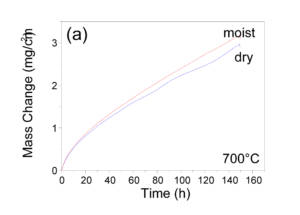
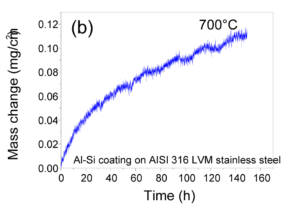 Fig.1:
Fig.1:
- (a) Influence of moisture on the oxidation behaviour of pure titanium in air at 700ºC.
- (b) Mass gain curve at 700ºc in dry air of AISI 316LVM stainless steel coated by hot dipping in an Al-Si alloy.
Als PDF herunterladen
Download PDF

